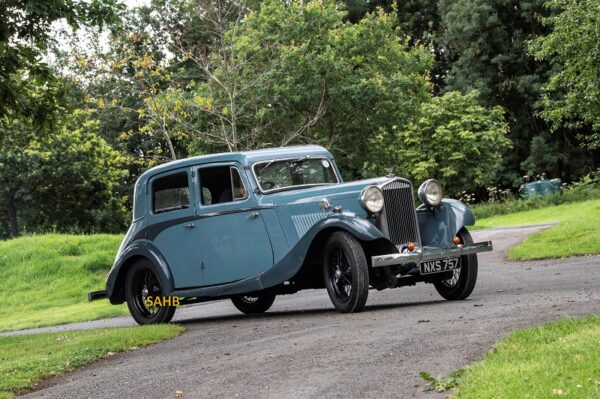
The story behind the British Salmson marque dates to 1890, when Émile Salmson (1858-1917) set up a workshop in Paris making steam-powered compressors and centrifugal pumps for railways and the military. He later diversified into petrol-powered lifts and motors.
Salmson was best known for its aero engines, made almost from the dawn of flying , but when demand dried up following World War I it added the production of car bodies and then complete motor cars from 1919 at Billancourt. Salmson had no car-building expertise, so its first products were British GN cyclecars built under licence. It displayed six cars at the 1919 Paris Salon.
The first true Salmson-designed car was the AL, designed by Émile Petit, with a remarkable four-cylinder engine using only a single pushrod per cylinder – it pushed to open the exhaust valve and a spring opened the inlet valve. In 1921 Petit went entirely the other way, with a four-cylinder twin-cam engine fitted to the D-Type launched in 1922. In 1929 came the S Series cars, with four cylinders and twin overhead camshafts, and a capacity of 1,471cc.
This brings us to the story of the British Salmson in our Snapshot. In 1929, the French Salmson company started a British branch company, Moteurs Salmson in Raynes Park, London, as a radial aero engine maker for the British Empire market. In 1930 this company was taken over by British sports car racing driver Howard Martineau and other investors. They named the company British Salmson Aero Engines Ltd and continued production under licence.
Aero engine sales were slow, so the company extended their licence deal to include British production of Salmson cars, starting with manufacture of the S4C in 1934.
The British S4C had the same twin-overhead-camshaft, 1,471 cc, four-cylinder engine and chassis as its French parent, but the gearbox was modernised with synchromesh on the top two ratios. The coachwork was to a British design, bought in from Ranalah or Newns in various versions. About 230 were made.
In 1937 the S4D was introduced, with an engine enlarged to 1,596cc, hydraulic brakes and transverse-spring independent front suspension. Only around 75 were made until 1938.
So far, the British company had essentially copied the French designs, but in 1936 it introduced the S6D or 20/90, which had no French equivalent, powered by a 2,580cc six-cylinder engine, again a twin-cam. About 15 were made up to the war, and a famous owner of one of these was the racing driver Dorothy Patten.
British Salmson became a printing machinery manufacturer after the war. The French company continued with aero engine and car production until it closed in 1957.
Photo by Peter McFadyen. See his website: http://petermcfadyen.co.uk







Leave a Comment